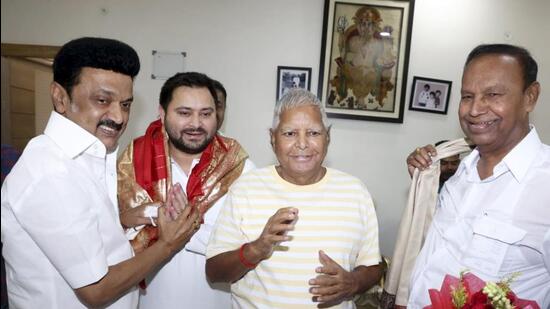
This summer, the National Mall in Washington, D.C., will host a temporary exhibition called “Beyond Granite: Pulling Together” with six prototype monuments commemorating underrepresented parts of U.S. history—from Indigenous legacies and the history of enslavement to civil rights, immigration, and LGBTQ+ activism. Paul Farber, director of the nonprofit Monument Lab, co-curated the exhibit with Pulitzer Prize-winner Salamishah Tillet.
We spoke with Dr. Farber about how symbols are connected to systems of power and public memory, and how artists, organizations, and movements can reimagine America's next generation of monuments.
Your research team spent a year analyzing nearly half a million records of historic properties from various sources. What did you discover?
For this study, we gathered existing data on historic properties created and maintained by federal, state, local, tribal, institutional, and other public sources. We looked for sites and structures we most conventionally think of as monuments—statues or monoliths constructed with stone or metal and installed or maintained in a public space with the authority of a government agency or institution. For our deepest investigations, we focused on a study set of approximately 50,000 conventional monuments representing data collected from every U.S. state and territory.
Our findings culminated in the National Monument Audit, produced in collaboration with the Mellon Foundation. The audit not only confirmed some predictable ideas about commemoration but also gave way to surprising and revealing findings.
For example, we found that of the 50 individuals represented most frequently by monuments in the U.S., 88 percent were white men considered wealthy by today’s standards, and half enslaved other people. There were only 3 women among these 50 individuals, a list topped by Joan of Arc. We also found that only one percent of Civil War monuments mentioned the word “slavery,” while only three percent of Confederate monuments included the word “defeat.”
You claim that national symbols, like monuments, are connected to systems of power and public memory. What is the connection between these systems and America’s state of democracy?
Monuments are always changing—not just due to wear and tear from weather and time, but also factors like new historical revelations. For example, over 370 names have been added to the Vietnam War Memorial since its dedication. There are countless others that have had adjustments that range from small tweaks to major renovations. There is nothing static about this landscape, even though monuments have an aura of permanence. Monuments require maintenance, money, and mindsets to keep them standing.
Consequentially, what they often reveal is information about their sponsors—those who have traditionally had access to time, resources, and official power, and who haven’t. Where inequalities exist, monuments often reinforce them. More recently, it has been inspiring to see a new generation of monument makers who are changing the way monuments are built, maintained, and positioned as part of larger efforts for healing and belonging. But historically, our monuments serve as visible litmus tests for the hurdles and challenges to reaching the goal of a fuller, multiracial democracy.
The National Mall has often served as a gathering place where activists and thinkers have tried to reshape U.S. democracy and elevate the voices of underrepresented groups—from “Resurrection City,” which saw anti-poverty protestors set up 3,000 wooden tents in 1968 and the AIDS Memorial Quilt display in 1987. What impact do you hope Beyond Granite: Pulling Together will have?
The exhibition is building on a profound practice of expression, reflection, and gathering on the Mall toward fuller democracy. Salamishah and I were invited to curate the inaugural show by thoughtful partners at the Trust for the National Mall, the National Park Service, and the National Capital Planning Commission.
We were inspired by Marian Anderson’s 1939 Easter Sunday performance on the steps of the Lincoln Memorial against a backdrop of a segregated capital. The title is a reference to Mary McLeod Bethune’s accounting of the event as a showing of a “pulling together” and “real democracy.”
We’re grateful to a brilliant group of artists—Derrick Adams, Tiffany Chung, Ashon Crawley, Vanessa German, Paul Ramirez Jonas, and Wendy Red Star—for imagining and building prototype monuments that speak powerfully to the past, present, and future.
Tearing down Confederate statues has produced a powerful backlash, as you’re aware. To make monuments in America more accurate in their representation of the country’s history, what’s your opinion on taking down monuments, versus adding new ones?
A toxic monument sitting outside of a courthouse or government building has no business being there. I’m glad to see dozens of municipalities address this harm directly and courageously.
But we shouldn’t look for a single or simple fix. Over 99 percent of American monuments were not toppled over the last several years. The bigger questions are: how will we summon a fuller accounting of our past? How will we reclaim collective narratives that have been neglected in public, examine the ways we have remembered and forgotten our histories, foster healing around collective traumas and wounds, and confront the lies we have been told to maintain white supremacy?
Where a monument was recently taken down, you will often find the infrastructure partially intact, including the spotlights that used to point up to the sky to illuminate a figure. When I see them now pointing up to empty space, it represents, to me, an unintentional monument to the moment of flux that America is in now.










